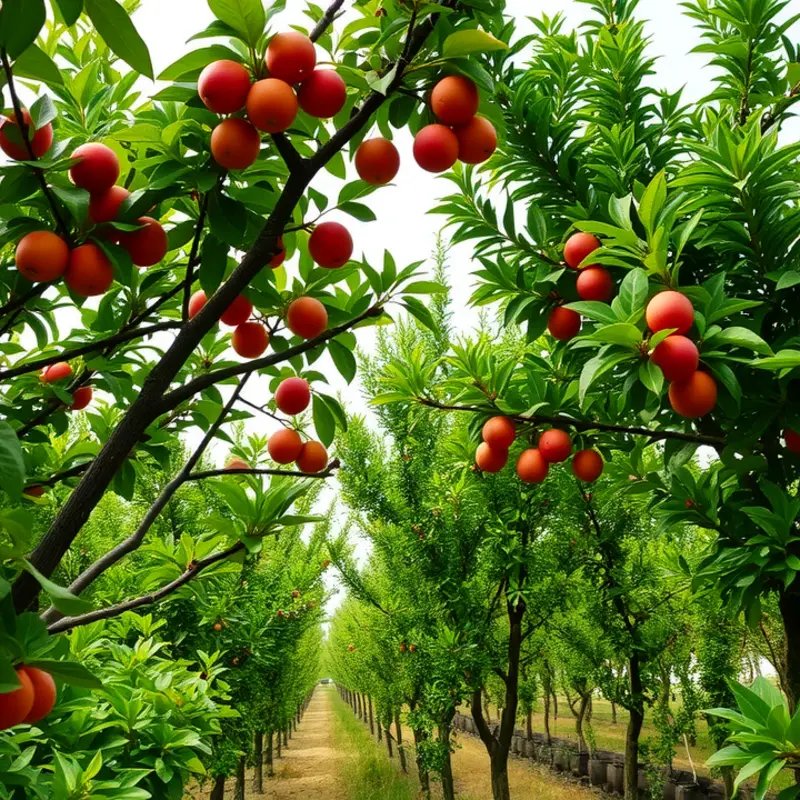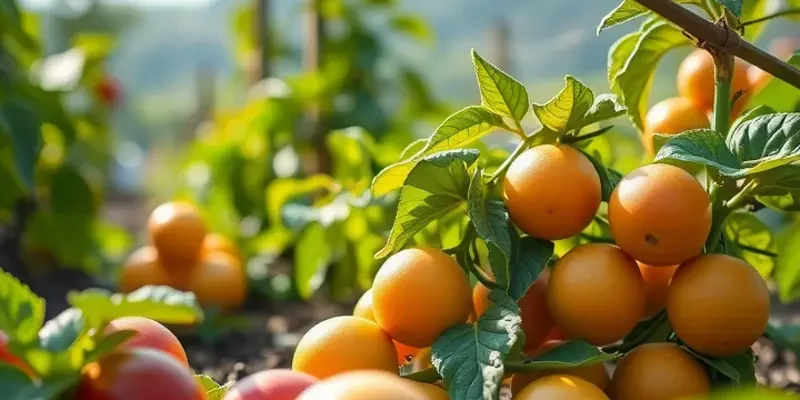Creating desserts filled with fruit flavors doesn’t have to mean loading up on sugar. Low-sugar fruit fillings provide the perfect solution for home cooks and health-conscious individuals eager to enjoy sweet treats. By using natural sweeteners, ripe fruits, and other clever ingredients, you can whip up delightful fillings that satisfy your sweet tooth while keeping dietary needs in check. This guide will explore practical ingredient options and substitutions for crafting low-sugar fruit fillings that boast flavor and nutrition.
Sweet Substitutes: Natural Sweeteners

When it comes to reducing sugar in your fruit fillings, a world of natural sweeteners awaits you. While maintaining a delicious sweetness, options like stevia and monk fruit provide a healthier alternative to traditional sugar. Stevia is derived from the leaves of the Stevia rebaudiana plant and is known for its intense sweetness, being approximately 200-300 times sweeter than sugar. This necessitates careful measurement; too much can lead to a bitter aftertaste. Generally, one teaspoon of stevia can substitute for a cup of sugar, but it’s crucial to consult the specific brand guidelines.
Monk fruit sweetener, sourced from the monk fruit plant native to Southeast Asia, offers a sweetness level that can reach 150-250 times that of sugar. Unlike stevia, monk fruit sweetener has no bitter aftertaste, making it an attractive option for those sensitive to taste variances. Its ability to withstand high temperatures allows for seamless integration into fruit fillings, maintaining stability during cooking. Importantly, the pure monk fruit extract should be preferred over blends that may contain added sugars.
When substituting these sweeteners in recipes, attention to texture is key. Sugar contributes not only sweetness but also bulk and moisture to fillings. To counteract the loss of volume, consider incorporating additional fruit puree or unsweetened apple sauce. This maintains the creamy quality of your fruit filling without excess sugar. Remember that the absence of sugar also means reduced caramelization, which may alter the final color of the filling.
Additionally, combining sweeteners can enhance flavor profiles and minimize any unwanted aftertastes. Mixing stevia with monk fruit, for instance, can balance their individual characteristics, delivering a more rounded sweetness. This blending approach ensures your fruit fillings retain the inviting taste expected from a sweet treat while keeping sugar content in check.
For those exploring different sweetening options, nutrient-rich syrups such as yacon syrup and chicory root syrup provide alternative solutions. Yacon syrup offers a low glycemic index and a pleasant, subtle sweetness. However, its high moisture content means it supplements rather than completely replaces granulated sugar. Chicory root syrup, distinguished by its prebiotic fiber, subtly enriches when mixed with fruit puree, adding a silky texture.
Effective use of these substitutes not only enhances your fruit fillings but can boost overall nutritional value, promoting a more mindful approach to satisfying your sweet tooth. To explore more on balancing flavors without compromising health, consider reading about how to cook without added salt in our in-depth guide here.
Fruits in Focus: Choosing the Right Produce

Selecting the right fruits for low-sugar fillings involves understanding the subtle dance of sweetness and tartness inherent in each type. Choosing wisely can transform desserts into delightful indulgences, balancing flavors and aesthetics without excessive sugar.
Berries are exceptional candidates for low-sugar fillings. Rich in antioxidants and bursting with natural flavor, they add vibrancy to any dessert. Strawberries, for instance, bring a bright sweetness with minimal sugar content. Preparing them involves simply removing the stems and slicing them for immediate use. Blueberries, with their inherently deep flavor, require less sugar to enhance their natural taste. Blending them to a purée with a touch of lemon juice can create a delightful filling with just the right tang.
Raspberries and blackberries, importantly, add a pleasant tartness, making them ideal for balancing overly sweet desserts. To make a smooth filling, cook them gently until they break down. Strain the seeds if a smoother texture is desired, retaining the luscious red color for a striking visual impact in pastries.
Among less sugary options, apples dominate with their versatility. Varieties like Granny Smith are especially preferred for their tartness and firmness, which holds up well in fillings. Apples need to be peeled, cored, and diced, then cooked with a hint of cinnamon or a splash of apple cider vinegar to enhance depth. This creates a filling that is both warm and subtly sweet.
Stone fruits such as peaches and plums offer a sumptuous texture and delicate sweetness. For low-sugar applications, choose slightly underripe fruits to capitalize on their natural tartness. Peaches can be blanched briefly to remove skin, sliced, and mixed with a pinch of nutmeg to create a filling that feels luxurious yet light in sugar.
Plums, with their rich hue, can be chopped and cooked down with a smidge of vanilla extract. The resulting mixture creates a bold, visually appealing filling that boasts a gentle natural sweetness. Apricots, often underrated, provide a tangy punch—simply halve, pit, and lightly caramelize for a more complex flavor profile.
When balancing flavors for these fillings, consider pairing fruits with complementary herbs or spices. Mint leaves work well with berries, adding a fresh note that enhances their natural appeal. Basil can pair beautifully with stone fruits, providing an unexpected layer of flavor.
Texture is as crucial as flavor when crafting fillings. It can be refined by adjusting the amount of fruit purée used, or by incorporating ingredients like chia seeds, which offer texture without altering taste substantially.
Aesthetics should not be overlooked. The vibrant colors of these fruits not only make for a visually enticing presentation but also signal the freshness of the produce used. By integrating a mix of these low-sugar fruits, desserts can be artfully crafted to delight the senses while minimizing sugar content.
For more insights on enhancing flavors without sugar, visit our ingredient guides on flavor enhancement, which discuss creative ways to amplify natural tastes sustainably.
Final words
Low-sugar fruit fillings are not just a healthy alternative; they are a delicious way to enjoy your favorite desserts. By choosing the right fruits and sweeteners, you can create flavorful fillings that everyone will love. As you experiment with various fruits and natural sweeteners, you’ll discover combinations that satisfy your cravings without the excess sugar. Whether you’re filling tarts, pastries, or simply enjoying fruit on its own, remember: health and flavor can go hand-in-hand. Let your creativity flow, make low-sugar fillings that appeal to your taste, and enjoy guilt-free indulgence.







